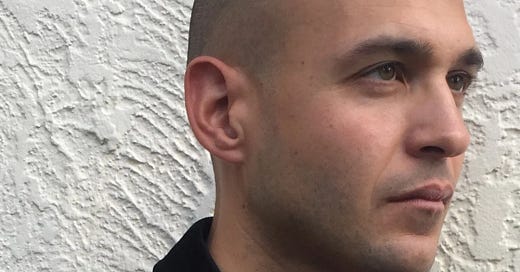Diversity as an Empty Gesture: Author Jonathan Marcantoni Speaks Out
By Guest Writer Jon Marcantoni
Having been an editor for seventeen years and a publisher for four, I have been acutely aware of the debates around inclusivity and diversity in the literary world and media. When I left my Editor in Chief role at Aignos Publishing in 2015 to establish La Casita Grande, it was with the goal of addressing what I felt was a lack of depth to the discussion around this subject.
The important thing to know here is that I wanted to get Latino writers out of the box we were placed in by white people. To merely have Latino authors is meaningless if we are not pushing the narrative forward as to the kinds of books we are wanting publishers to release.
I didn’t want to just be a gatekeeper swinging the door open for my people. Rather, I want to show the industry the kind of stories we are capable of telling once we are freed from the expectation of a market whose terms were never meant for us as human beings.
I tried for four years to bring in writers who didn’t focus on immigration and identity since those are the boxes Latinos live in, ones which are not only restrictive but also keep us in an American-centric worldview that derives our worth based on our Americanness. Yet time and again, the submissions were those very stories that the company itself was pushing back against.
The narrative of the good immigrant from the noble family of hard-working people who pull him or herself up by the bootstrap no matter the adversity is so deeply embedded in the narratives of people of color that even Native Americans write about the pull to assimilate to be a part of American society. This is despite the fact that the United States is occupying their land (as a Puerto Rican, this dynamic is one I know all too well).
This narrative is seen in countless books, TV shows, and movies that offend progressive-minded people. I should be able to write about whatever I want because doing so as a Latino is true diversity. But not only is the publishing industry not interested in that, the literary community who should be pushing back against it instead accepts it and promotes it with gusto.
I fear that in my position as the Local Author Coordinator at Tattered Cover Bookstore, I will be confronted with the same problem as I seek to bring in more brown and black writers, especially younger writers. In my experience, the industry pressure to conform, promoted by agents and MFA programs, has even affected up-and-coming writers who are desperate to be traditionally published.
What is different now than when I was with La Casita is that I was a one-man show with no budget. I used technology to make what progress I could, and my financial constraints also hampered my ability to develop writers.
At Tattered Cover, part of my mission is to create workshops and webinars that can be used to develop writers, rather than just put them on our shelves. Much of this is geared toward not only marketing and networking but creating a support system that pushes our local writers to be ambitious and bold in their storytelling.
All of this is vital to diversify beyond race and ethnicity. We need to push different styles, perspectives, and champion challenging works of fiction and nonfiction.
Diversity initiatives mean nothing if the narratives don’t change. Those of us in the Latino and Asian communities should look to our homelands for inspiration. There is a rich artistic history that we are connected to outside of the US, which extends to cultures that are not our own.
We cannot break the superficial nature of diversity if we do not plunge into the depths of our shared humanity. To do this, we need an investment of our time, resources, and knowledge to mentor up-and-coming writers as well as providing a space for them to expand their abilities and feel safe expressing their truth.
Jonathan Marcantoni is the Local Author Coordinator at Tattered Cover Bookstore in Denver. A novelist, screenwriter, and editor, he is the author of three novels Communion (with Jean Blasiar), Traveler's Rest, Feast of San Sebastian, and Puerto Rican Nocturne: Bilingual Edition. His work is described as a mix of stream of consciousness, existentialism, surrealism, and ellipsism.




